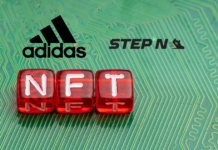The rise of cloud computing represented a significant breakthrough for e-commerce. It allowed business owners to easily outsource to cloud providers and not bother setting up and maintaining costly infrastructure and servers. And now the cloud service space is both lucrative and competitive. Amazon Web Services (AWS), Google Cloud, and Microsoft are some of the biggest cloud service providers. Also, as of 2021, AWS alone had about 34% of the top 100,000 websites operating on it.
However, there have been some problems with these centralized powers (which we will talk about much later), and decentralized projects like Flux are out to fix them. Before talking about Flux and how it’s going to change the landscape for cloud service providers, let’s look at the background of AWS and then its subsequent challenges.
What is AWS?
Amazon Web Services is a division of Amazon Inc. that provides cloud computing services and APIs to individuals, businesses, and governments. Amazon built sophisticated data centers across the world to give you access to servers that you can use for security, data management, storage, etc.
7 / @amazon is integrating @avalancheavax into its web services platform.
Technically, this will allow developers to launch Avalanche nodes on Amazon Web Services.
Practically, the Avalanche ecosystem will proliferate due to support from Amazon's massive web service clientele. pic.twitter.com/gr8gjmY1B7
— Lark Davis (@TheCryptoLark) March 5, 2023
Here’s the background story. In the early 2000s, Amazon was having difficulty scaling its engineering operations. The company was growing increasingly concerned with how to maintain its computational capability in step with the expansion of its online business.
While trying to resolve their own issues, they came to a huge realization. Amazon realized that other developers could be facing similar challenges as they did. So, Amazon launched AWS to other developers in late 2002. Surprisingly, by 2004, several developers had embraced their storage service to build their applications. Amazon later released its cloud services to the public in 2006.
AWS has gone beyond being a side project to hold the top position at Amazon. Netflix, Epic Games, Disney, and Airbnb are just a few of AWS’s notable clients. But, using centralized services like AWS has a heavy price attached, and this goes beyond money.
The risk with centralized platforms
Although cloud services let you save your data across several servers, almost all of them are centralized under a single organization. This implies that one company (Amazon for AWS users) controls all of your data and the apps running on the servers.
The risk is in the centralization of this power into large tech companies or governments. Ownership and control need to be decentralized. https://t.co/ZkZ0R5mhIq
— AI3 (@ai3_dao) March 6, 2023
Also, Businesses relying on AWS services experienced a total loss amounting to billions of dollars when the provider’s services went down for the third time in 2021.
In addition to server disruptions and downtimes, the majority of centralized providers practice “lock-in.” Here, a cloud-based application is modified to perform effectively exclusively on that infrastructure.
Although this results in better performance, it is more difficult for customers to move their apps to other cloud service providers. They are “locked in,” even if they eventually become unhappy with the escalating costs.
However, Flux offers a solution—a decentralized solution. A decentralized cloud service provider like Flux Nodes allows users to store data on a decentralized platform. Being decentralized means that thousands of shareholders (node holders) make up the system. So, no single company has complete control over your data or information.
About Flux Nodes
Flux nodes are a blockchain-based, decentralized cloud infrastructure. The platform has a simple goal: to build the next generation of the internet with the largest decentralized computational network. As of August 2022, Flux had around 12300 nodes and offered its users 244TB of RAM and 5.4 PB of storage.
3/n: What is flux ?
Flux is a decentralized Web3 cloud infrastructure comprised of user-operated, scalable and globally distributed computational nodes.@RunOnFlux @KadenaNZ #Flux #Decentralization #Web3 #Crypto pic.twitter.com/rNK8DtIwxr
— EslabonianzARMY (@EslabonianzARMY) January 14, 2023
The decentralized design of Flux nodes, both in geography and architecture, enables apps to function even if the nodes on which they are executing fail. Interestingly, no single point of failure exists. This is because the entire system is designed to be automatically redundant.
Also, FluxOS, the ecosystem’s operating system, has an interoperable design. This ensures that DApps can operate without a hitch on the Flux cloud infrastructure, regardless of their original blockchain.
4/n : Blockchain with a trusted consensus mechanism
flux has its own blockchain, makes it not depending on the mercy of other ecosystems. It uses proof of useful work(POUW) consensus which is similar to bitcoins proof of work(pow) consensus#BTC #proofofwork #flux #blockchain pic.twitter.com/HLI9CRufSr
— EslabonianzARMY (@EslabonianzARMY) January 14, 2023
Flux serves as the main infrastructure platform for developers building top Web3 applications. The synergy between Web2 and Web3 is the obvious future of the internet. Flux has already taken advantage and positioned itself as a key player with multiple partnerships.
Flux has partnered with top guys in Web3 such as Nvidia, Lumen Technologies, Seeed Studio, and OVH Cloud. Through these partnerships, Flux is able to offer decentralized solutions to companies, whether they use Web2 or blockchain technology.
#Flux just partnered with @seeedstudio to deliver #web3 infrastructure🔥 So many cool devices now available to host a Flux #node at home! Why throw 💰 away to VPS when you can own one yourself? @RunOnFlux @runonflux_io @dak_flux https://t.co/5NRAw7W2Am pic.twitter.com/mpIBGLAY8v
— Modo Tech (@ModoTech2021) February 18, 2022
Check out this blog post for a detailed understanding of the Flux ecosystem.
Is Flux the new Amazon?
It is more likely than ever that more open cloud infrastructure will lure more developers and users as Web 3.0 and the emerging decentralization movement gain traction. Flux has a chance to be a dominant force because of its ability to store data in a more open system. People are becoming skeptical about platforms like Amazon wielding uncontrolled access to data and global information. So, the more developers think about decentralization, the more they’ll embrace Flux.
What Is Flux Token Used For?
Blockchains need their own native cryptocurrency, and Flux has the $FLUX coin. $FLUX powers the Flux ecosystem and helps with collateralizing nodes, purchasing resources, and fueling transactions on FluxOS. You can also use the FLUX coin to reward both miners for validating transactions and FluxNode operators for offering computational resources.
You can stake, buy, sell, and exchange the coin. Also, you can run your own Flux Node on the network if you own FLUX.
As of this writing, Flux trades at $0.677184. It has a 24-hour trading volume of $7,963,026. FLUX is available on a few exchanges including Binance.US for our American readers. Also, did you know that on Binance US you can get whitelisted for the Cristiano Ronaldo first official NFT collection, receive his free souvenir NFT and earn $500? Just click this link.
⬆️ For more cryptocurrency news, check out the Altcoin Buzz YouTube channel.
⬆️ Our popular Altcoin Buzz Access group generates tons of alpha for our subscribers. And for a limited time, it’s Free. Click the link and join the conversation today.





























